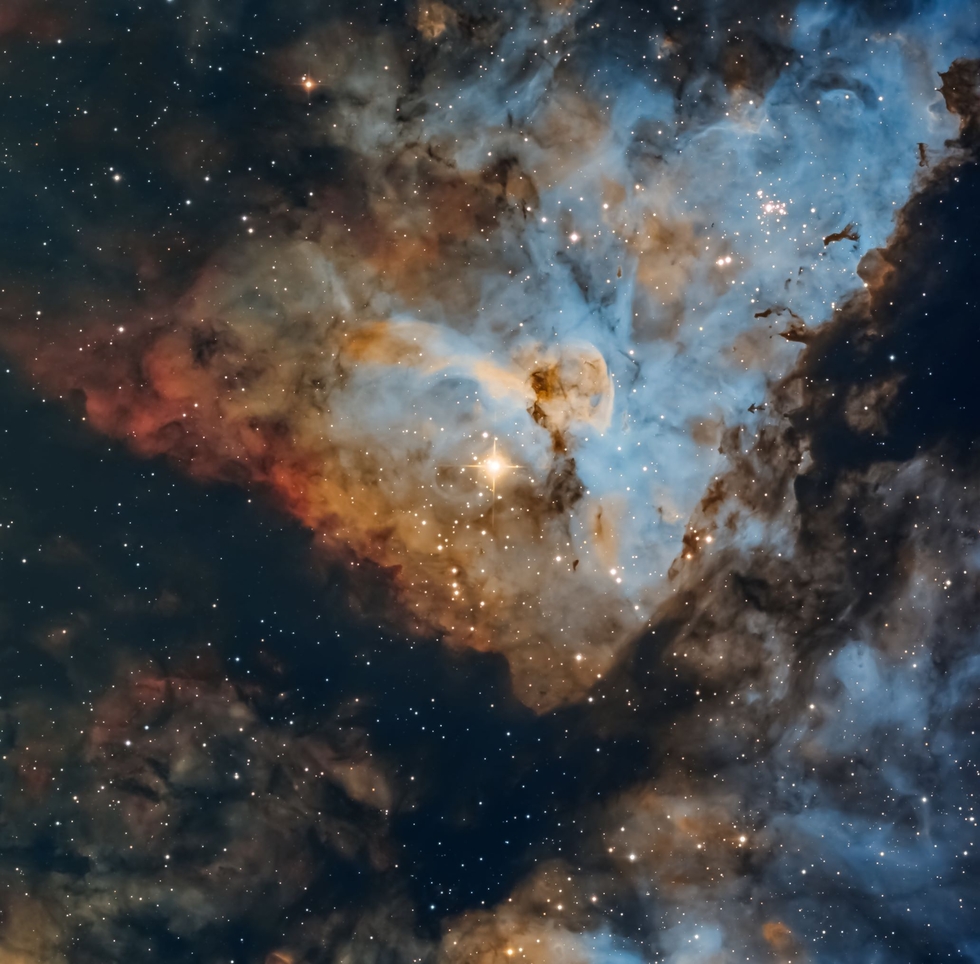CarinaNebula
CarinaNebula
The Carina Nebula (also known as the Eta Carinae Nebula or by the catalog designations NGC 3372 and C 92) is an emission nebula located in the heart of the southern Milky Way, in the constellation Carina. It is perfectly visible even to the naked eye, although its observation is limited to the regions of the Earth's southern hemisphere and the northern tropics; it was first catalogued by Nicolas Louis de Lacaille in 1751, during his stay in Cape Town.
It is one of the largest known H II regions within our Galaxy: the nebula has real dimensions that reach 260 light years and surrounds several open clusters, as well as one of the most massive stars known, the variable η Carinae. Some star formation phenomena are active within it, although to a lesser extent than in other similar nebulae: this would be an indicator of the high degree of evolution of this nebula. Its distance is estimated at 7500 light-years from us.
As evidence that star formation in the astronomically recent past has been quite intense, there are a large number of open clusters and stellar associations, all composed of very hot, blue young stars, which excite the gas of the nebula and perturb it with their strong stellar wind. Within the nebula there are also well-known substructures, such as the Homunculus Nebula, which surrounds the star η Carinae and the Keyhole Nebula, whose name was assigned to it by John Herschel in the first half of the nineteenth century.
It is one of the largest known H II regions within our Galaxy: the nebula has real dimensions that reach 260 light years and surrounds several open clusters, as well as one of the most massive stars known, the variable η Carinae. Some star formation phenomena are active within it, although to a lesser extent than in other similar nebulae: this would be an indicator of the high degree of evolution of this nebula. Its distance is estimated at 7500 light-years from us.
As evidence that star formation in the astronomically recent past has been quite intense, there are a large number of open clusters and stellar associations, all composed of very hot, blue young stars, which excite the gas of the nebula and perturb it with their strong stellar wind. Within the nebula there are also well-known substructures, such as the Homunculus Nebula, which surrounds the star η Carinae and the Keyhole Nebula, whose name was assigned to it by John Herschel in the first half of the nineteenth century.
SPECIFICATIONS
Telescope
CHI-1-CCD
Camera
FLI ProLine PL9000
Location
EL SAUCE OBSERVATORY, CHILE
Date of observation
BUNDLE
Filters
HSO
Processing
Pixinsight and Photoshop
Credits
Credit Sauro Gaudenzi / Data Telescope Live


